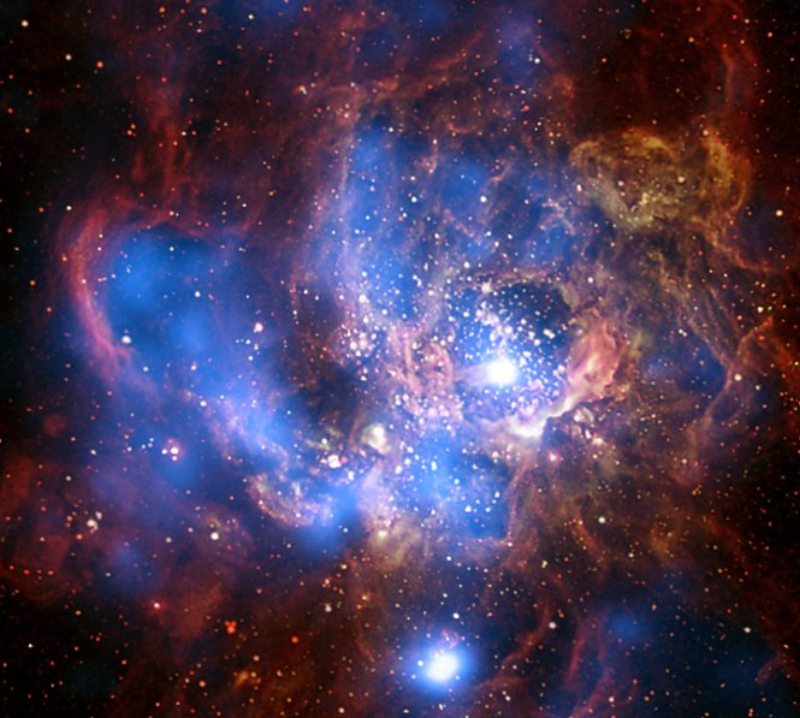
 Credit: NASA/CXC/CfA/R. Tuellmann et al.; Optical: NASA/AURA/ STScI
Credit: NASA/CXC/CfA/R. Tuellmann et al.; Optical: NASA/AURA/ STScI
Evacuation Route
The beautiful image above of the star cluster NGC 604 in the nearby galaxy M33 is a combination of a high-resolution image by the Hubble Space Telescope plus an X-ray image by the Chandra X-ray Observatory. This image is one of the best ever obtained showing the interaction of stars and their environment. The Hubble image shows how the massive stars have formed together, and how their combined winds (and the explosive deaths of the most massive members?) have carved out huge bubbles, which (as the Chandra image, in blue, shows) are filled with hot shocked gas. The Chandra X-ray image suggests that most of the hot gas was produced by a combination of stellar winds on the right side of the cluster. However, on the left side of the cluster, the bright X-ray emission does not appear to be associated with stars, so that supernovae probably played a more important role in producing the hot X-ray emitting gas. The HST and Chandra data implies that a massive wall of gas shields the relatively quiet region on the left from the active star formation on the right.
Published: February 02, 2009
<
HEA Dictionary ● Archive
● Search HEAPOW
● Other Languages
● HEAPOW on Facebook
● Download all Images
● Education ● HEAD
>
Each week the HEASARC
brings you new, exciting and beautiful images from X-ray and Gamma ray
astronomy. Check back each week and be sure to check out the HEAPOW archive!
Page Author: Dr. Michael F. Corcoran
Last modified Tuesday, 27-Feb-2024 10:06:49 EST


